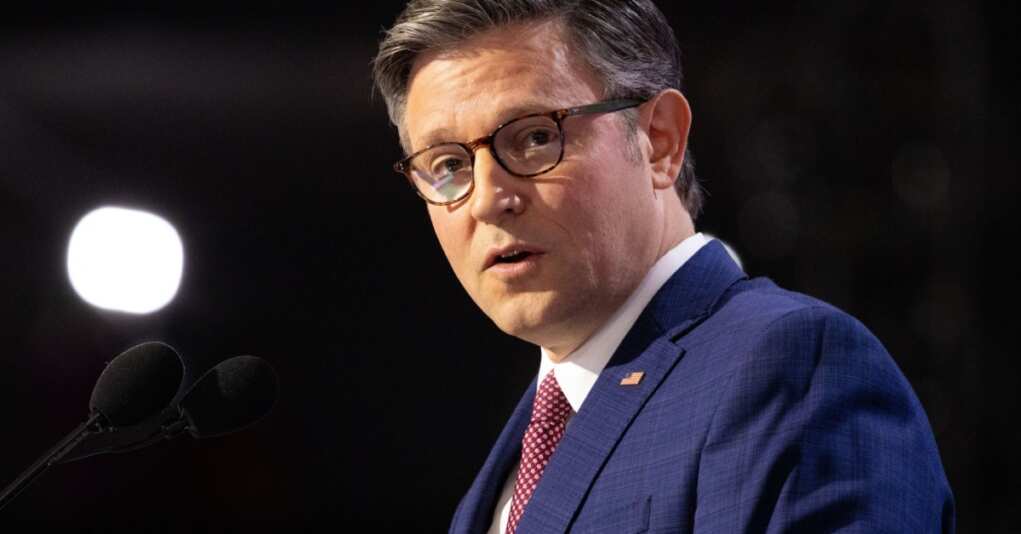Johnson’s Budget Ballet: Dancing Around Dollars While Democrats Dither

In the grand theater of Washington politics, House Speaker Mike Johnson has unveiled his latest performance: a budget blueprint promising spending cuts between $1.25 trillion and $1.5 trillion. It’s a bold move, especially when some conservatives were hoping for a $2.5 trillion slash-and-burn routine. But hey, in politics, as in theater, compromise is key, right?
Johnson’s proposal isn’t just about trimming the fat; it’s also about setting the stage for the GOP’s ambitious domestic policy package. This includes a sweeping border, energy, and tax agenda that Republicans are eager to pass using special budget reconciliation procedures. The catch? They need near-total unity within their ranks to pull it off. And with the Senate ready to debut its own competing budget plan, the pressure is on.
But the plot thickens. Johnson’s plan could give the Ways and Means Committee even less fiscal space to craft an expansive package of tax cuts. This move is bound to ruffle feathers among GOP members who are already fretting over fitting all of President Donald Trump’s tax priorities into the bill. It’s like trying to squeeze a three-hour opera into a one-act play.
Behind the curtains, there’s a bit of drama unfolding. Johnson, along with House Majority Leader Steve Scalise and other senior Republicans, had a little chat with House Budget Committee Chair Jodey Arrington. They pressed him on how his more conservative committee members might react to the new leadership-led plan. Arrington’s response? A non-committal shrug, leaving some senior Republicans worried that he might not be fully on board. It’s the classic will-they-won’t-they subplot that keeps audiences guessing.
Meanwhile, the Democrats are grappling with their own dilemmas. Their base is clamoring for a more aggressive stance against President Trump’s policies. Yet, when it comes to using their major leverage point—forcing a government shutdown if the GOP doesn’t rein in the president’s war on the federal government—they’re hesitant. As Rep. Sanford Bishop, a senior appropriator, put it, ‘My folks don’t want to shut down.’ It’s a delicate dance, balancing the desires of their supporters with the practicalities of governance.
Senator Richard Blumenthal echoed this sentiment, emphasizing the need to ‘use whatever levers and points of power we have’ to extract concessions from the Trump administration. But he quickly added, ‘I don’t think we should seek a shutdown.’ It’s a bit like threatening to bring the house down while making sure the chandelier stays intact.
In this political ballet, both parties are performing intricate routines, trying to outmaneuver each other without tripping over their own feet. Johnson is working to build unity within his party, navigating the fine line between satisfying conservative hard-liners and crafting a budget that can pass muster. On the other side, Democrats are weighing their options, cautious about triggering a shutdown that could backfire politically.
As the curtain rises on this latest act, one thing is clear: the stakes are high, the players are poised, and the audience—American taxpayers—is watching closely. Will Johnson’s budget ballet earn a standing ovation or a chorus of boos? Only time will tell. But in the world of Washington politics, the show must go on.

